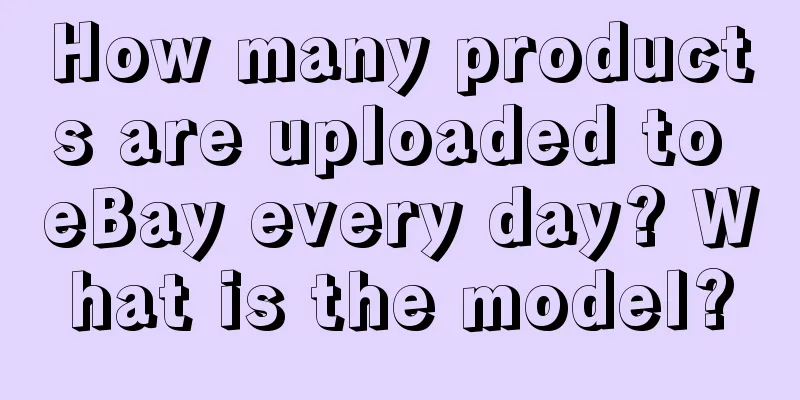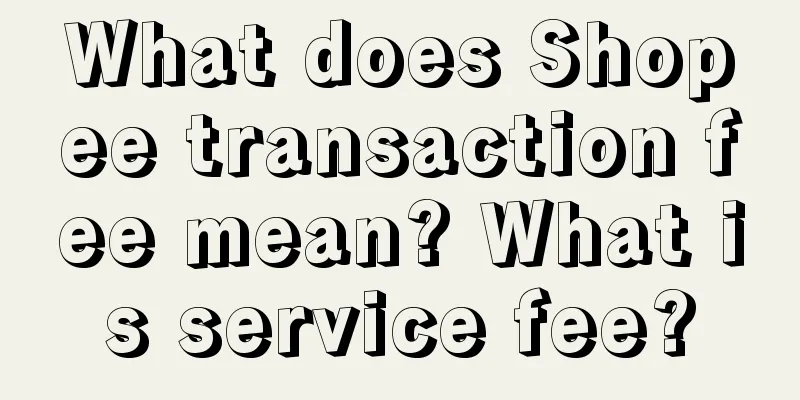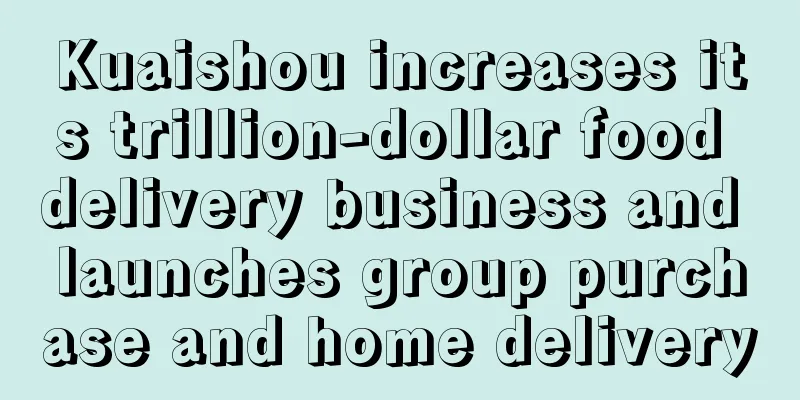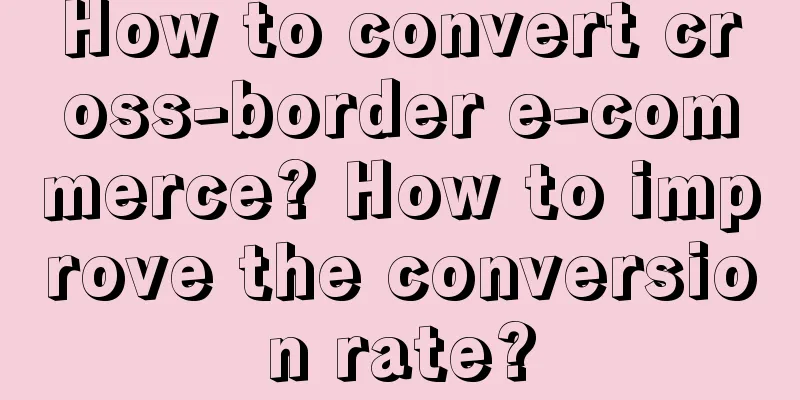The current brand competition is no longer a competition of minds, but a competition of narratives!
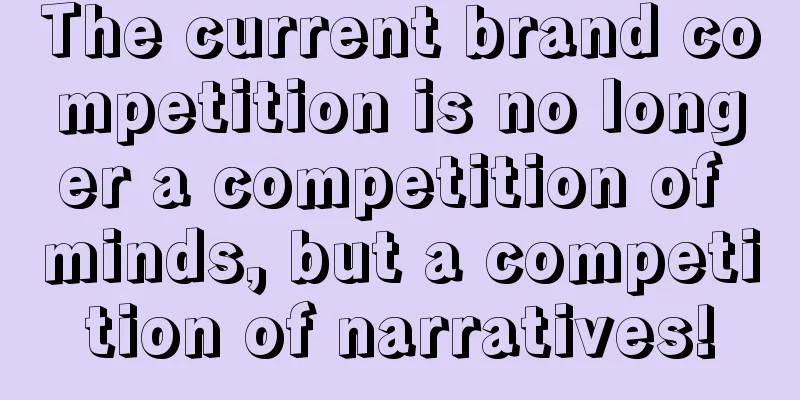
"The current brand competition is no longer a battle of minds, but a battle of narratives." This is our judgment on the current business situation. I turned this judgment into a set of methodology called "business narrative." 01 Why is the “battle of minds” no longer important?The root cause of competition is homogeneity. Just imagine, if your products are completely different from those of your competitors, consumers will not make comparisons when shopping, and there will be no comparison in quality, price, or service between you and your competitors. There is no need for you to compete with each other at all. We can infer this principle in reverse: if a brand wants to win the competition, it essentially needs to create differentiation so that the opponent cannot compete with you, rather than trying to do better than the opponent. This principle sounds simple, but most businesses cannot get around it. Because pure competition is the nature of animals, there are always many wolves in a wolf pack who want to compete for the position of wolf king. There are always two or three male monkeys in a monkey group, competing for a female monkey at the same time. Competition is a cruel and addictive concept that makes our adrenaline surge and creates an inexplicable desire to conquer. So, when your competitors start to lower their prices, your first reaction should be “don’t care about life or death, just fight me” instead of “what should I do to make it impossible for my competitors to compete with me?” If we use a picture to describe the mentality of most businesses when facing competition, this picture looks like this: When facing competition, the thinking mode that smart businesses should have should be like this: Although the above way of thinking is correct, the reality is not so perfect. Because most industries and most brands, although striving to be different, can often only achieve slight differentiation. Ideals are full, but reality is skinny. At this time, brand theories similar to "positioning" emerged. These theories believe that since it is difficult to differentiate the product itself, we can create brand differentiation in the mind. The specific principle is: the consumer's mental capacity is limited. When buying any category of goods, they can only recall two or three top-ranked brands. Therefore, if a brand wants to win the competition, it must enter the candidate list in the consumer's mind, occupy a blank position, or occupy the first or second position. For a long time, many Chinese brands have been involved in this war of minds, desperately trying to find a blank space in the minds of consumers and attempting to hold that position firmly. But in recent years, this "mind-occupying" logic has become increasingly inefficient. You will find that no piece of psychological soil is blank for a long time, and don’t expect that you can occupy this piece of psychological soil all the time, because countless brands that are emerging are squeezing the original market and filling the potential market gaps. Why is the period of “mind occupation” shortening? It depends on what weapons merchants use to fight on the soil of the mind. There are only two kinds of weapons: saturation delivery and operational matching. "Saturated delivery" means using a large amount of advertising to brainwash users, causing them to make unthinking associations between categories and brands, such as "choose MILKLAND for cheese." But anyone with a normal IQ knows that cheese is not equal to Meiji Landou, and there are many other choices. Therefore, if this kind of brainwashing advertisement wants to be successful, there are two necessary conditions: repetition and a closed discourse environment. For businesses, "repeating" means spending more money. The “closed discourse environment” means a media that only transmits one voice. However, this environment no longer exists today. There are countless KOLs on Douyin and Xiaohongshu who will tell you that in addition to Meiji Landou, there are various other cheese consumption options. As for "operational matching", it means adjusting business activities around the company's positioning to make itself worthy of this positioning. It is becoming increasingly difficult to occupy a position in operations. The world's technology and industrial level seem to be crossing the "singularity". For most industries, there is no concept, service, or technology that you can do and your competitors cannot copy. All differences are only temporary. As long as there is profit to be made, someone will immediately follow up, copy, lower the price and fight back. At present, the "mind space" of all brands can only be temporary, and this cycle will become shorter and shorter. 02 What brands need to compete for is no longer the minds of consumers, but the right to speak in society!In recent years, there has been a phenomenon: a certain brand has already established a certain position in the hearts of consumers, but is suddenly attacked by someone, shaking its position. Nongfu Spring, Ideal Auto, Baidu, Zhiji, Oriental Selection, Huaxizi... Think about the public opinion storms of these brands and you will understand what I mean. You will find that there has been a big change in public relations crises in recent years: it is often not consumer incidents that destroy brands, but public opinion events involving the company's relevant stakeholders. In the past, we thought that brands belonged not only to companies but also to consumers. It was a mutually beneficial relationship between companies and consumers that jointly shaped a certain brand impression. Now, this concept should be updated: the brand belongs not only to the enterprise, but also to consumers, employees, media, dealers, franchisees, investors, KOLs, local governments... In this era of social media, any role's interpretation of you is likely to "lead the trend" and make everyone prejudiced against you, and this prejudice cannot be clarified at all. The current brand competition is no longer a simple matter of seizing a place in consumers’ hearts. The brand’s communication scope must be expanded from consumers to all roles related to the enterprise. We should not only understand brands from the perspective of consumers, but also re-understand brands from a social perspective. Why should we look at brands from a social perspective? Because with so many stakeholders, it is impossible for a brand to have the same image in different roles, as the demands of different social roles are fundamentally different.
If you want different people to agree with you, it is not important to ask “what is different about you”, but “where are you going?” For example, in a basketball team, there are players, coaches, bosses, assistant coaches, physical trainers, and physiotherapists... It is impossible for a player to ask everyone to have the same impression of him, but everyone can have a common goal, which is to win the championship. Let’s apply this logic to brand marketing: The biggest difference between Tesla and other car companies is not that Tesla has absolute differences in products and technologies, but because Tesla’s mission is to "accelerate the world's transition to sustainable energy." The biggest difference between Nike and other shoe manufacturers is not that Nike leads the world in sales, but that Nike hopes that "all ordinary people have the spirit of athletes." In short, whether you are a person or a brand, the biggest difference between you and your competitors is not because you are really different from others, but because the path you take is different from others. When a brand is communicating “What is the difference between me and my competitors?”, what everyone is considering is “who is more in line with my interests?” However, when a brand conveys to others “where are we going together”, everyone considers “what can I do for this goal” or even “what can I give up for this goal”. When Tesla keeps lowering prices, it’s hard for competitors to accuse Tesla of “malicious competition.” When Tesla’s factories keep increasing production capacity, it’s hard for workers to call Musk a “cannibalistic capitalist.” Because Tesla’s brand goal is to “accelerate the world’s transition to sustainable energy,” and this great vision can shut everyone up. The phrase "accelerating the world's transition to sustainable energy" has formed a social discourse, allowing Tesla to be invincible almost every time in unfavorable public opinion dialogues. In my brand context, Tesla’s brand concept is called “business narrative”. 03 Business Narrative"The so-called business narrative is to describe your business information as 'you are promoting something meaningful'. Transform business intentions into social visions, so that brands can gain economic discourse power by gaining social discourse power." This is my definition of "business narrative". In addition to Tesla, we can also see the shadow of "business narrative" in Xiaomi.
Almost all of Xiaomi’s slogans are not a so-called positioning or selling point, but a business vision and a description of where Xiaomi is going. In particular, the "narrative" of Xiaomi Auto is worth our careful consideration. Even though Xiaomi Auto has the best price-performance ratio, the trust cost of first-time purchase is still very high for Xiaomi, which is making its first car. After all, cars are not mobile phones, and spending 200,000 or 300,000 yuan on a car is a very rational decision for most people. Xiaomi's way of alleviating user concerns is not to emphasize cost-effectiveness. You see, Lei Jun said, "Making cars is hard, but success must be cool," "We are not willing to be mediocre and are still fighting for our dreams," and "I'm putting my entire reputation on the line." Xiaomi tells a story about Lei Jun's departure for a business ideal. This is the "business narrative" of Xiaomi Auto: Xiaomi's car-making business behavior is described as an ideal battle for which Lei Jun is betting his entire reputation on, attracting different characters to join this "ideal support battle."
When you compete with Xiaomi, you can’t win by occupying people’s minds. High-end cars, fashionable cars, family cars, off-road vehicles, women-only cars, and more cost-effective cars? None of them will work. You can only use "narrative" to fight against another "narrative". For example, when Lei Jun compared the performance of Xiaomi SU7 and Tesla, Musk tweeted a paragraph to mock Xiaomi: “The proper way to grade any technology is not to compare it to its competitors (because that’s too easy), but to compare it to its physical limits.” Musk won this little round of public opinion competition. The Twitter king's "narrative" level is obviously higher. Putting aside Lei Jun and Musk, two masters of "business narrative", for most brands, their business is just "telling things" rather than "narrating stories". "Telling things" can only express objective truth, while "narrative" can shape subjective truth. What is "objective truth" and what is "subjective truth"? When you were traveling in Dali, you met a beautiful woman you liked. You chatted with her for 2 hours. When you parted, you felt that the 2 hours were as short as 2 minutes. This is "subjective reality". Let me explain how "business narrative" shapes "subjective reality" from three dimensions:
04 Perspective Switching: “Reality” in 3D PerspectiveLet’s go back to this picture. The harsh reality of brand competition is that although everyone strives to differentiate themselves, the effect is minimal. But the reason why different brands look the same is because we only look at the brand from a one-dimensional perspective. If we regard the brand as three-dimensional, the same brand will look completely different as long as we switch to a different observation perspective. From different perspectives, we will see different scenery, which is a kind of "subjective reality". Let’s look at the business case. There is a royal botanic garden in the UK called Kew Gardens. Kew Gardens has 1/8 of the world's plant species, and its collection is the richest in the world. Kew Gardens relies on government funding to operate, receiving about 20 million pounds of funding from the British government each year. However, after 2015, the British government implemented a fiscal austerity policy and planned to reduce public funding for this "botanical garden." So, Richard, the director of Kew Gardens, found a consultant and asked him to redesign Kew Gardens' brand narrative to influence the British government's financial decisions. Kew Gardens’ original brand narrative was:
Like many brands with a long history, the director Richard dug up the history of Kew Gardens, hoping to give Kew Gardens a legendary color by using a historical story. However, consultants overturned the original historical narrative because no matter how legendary a botanical garden is, it is still a botanical garden after all, and if it has no practical value to society, then the finances will not favor Kew Gardens. The new brand narrative says:
The year after the new narrative was applied to the promotion, Kew Gardens regained funding from the British government. Moreover, the British government promised to provide Kew Gardens with 20 million pounds of funding every year for the next four years. Objectively speaking, Kew Gardens is just a relatively large botanical garden with only sightseeing value. But when we switch perspectives, Kew Gardens has become the "world's largest plant database" and has incomparable scientific research value. One of the specific operating methods of "business narrative" is to reshape the user's view of a thing by switching the narrative perspective. 05 Background frame: Different background frames lead to different viewsHow do humans define good and evil? You think Longjiang pork trotter rice is delicious, but your Muslim classmates will think that this dish is blasphemous to their faith. There is no absolute good or bad in the world. Good and bad come from our culture, history, religious beliefs, political stance, workplace position, social rules and all other human thinking habits. These habits are like the frame of a house. They are our brain's comfort zone and also its prison. How do we determine whether a brand is homogeneous, unique, or leading the industry? It all depends on the background framework we use to view the brand. This is vividly demonstrated in Grid Coffee. Grid Coffee has launched a new Kenyan coffee this year, but it will take some effort to promote this coffee. This is because Chinese people are very unfamiliar with Kenya. Their impression of it is that it is a desert and extremely hot place, and they have no desire to visit it. Even if Grid Coffee says that Kenyan coffee is delicious, consumers will not be too moved. Grid Coffee focuses its narrative on a pair of northern white rhinos in a nature reserve in Kenya. This mother and daughter are the last two northern white rhinos in the world. After their death, the species will become extinct. This is a sad story, but when we see them cuddling each other, we can feel a sad sweetness. Coincidentally, Kenyan beans naturally have a berry flavor and are very sweet. The sweetness of the northern white rhino mother and daughter cuddling each other and the bitterness of fate are intertwined, which is very similar to the taste that Kenyan coffee beans want to convey! Therefore, Grid Coffee used a Swahili phrase to express the taste of this coffee, "Love eliminates bitterness", and this product sold out as soon as it was launched. Whether a product is good or worth the price does not depend on the product itself, but on our interpretation of the product. After He Fan, brand director of Grid Coffee, finished telling the story of the northern white rhino mother and daughter, the cup of bitter but slightly sweet and sour Kenyan coffee in my hand suddenly became delicious, and my taste buds seemed to "understand" the taste all at once. In the future, when you want to make your brand look better, the right thing to do is not to compare it with competitors, but to give the product a "background frame." 06 Causation: The way humans understand the world is "narrative", not "information"When businesses want to convince consumers that their brand is better, they often try to “convince” the customer. This is one of the biggest pitfalls in the marketing world. Let’s take Tesla as an example. You can imagine: if Tesla hires a consulting company to do brand positioning, Tesla’s main KVs should include this information: Brand positioning: Global leader in new energy vehicles Slogan: Leading the global sales of new energy vehicles Letter of Trust: TOP 1 in sales of new energy vehicles in North America; the car used by many founders of Silicon Valley technology companies such as Larry Page and Larry Ellison! In this KV, there is a rational deductive relationship between all business information, which is a combination of arguments, evidence, and reasoning. The biggest problem with persuading customers by relying on the logical relationship between information is that you trigger the customer's rational thinking. The more a brand proves to customers how cost-effective it is to buy from me, the more likely they are to find faults and challenge your logical loopholes. Good brand marketing is not about making consumers feel it is a good deal, but about making consumers forget to calculate. How does Musk define the Tesla brand? He said: Tesla is "accelerating the world's transition to sustainable energy." This sentence is not a positioning or selling point at all, but a "narrative." “Accelerating the world’s transition to sustainable energy” is a short sentence, but it is full of event elements.
In the sentence "accelerating the world's transition to sustainable energy", Musk described Tesla's business information as Tesla "driving something meaningful". This narrative contains a strong causal relationship: Because the world's environmental pollution and energy crisis are getting worse, Tesla wants to sell new energy vehicles to make the world use sustainable energy. For consumers, buying a Tesla is making a contribution to the world. Narratives essentially use hidden cause-and-effect relationships to allow users to make decisions without thinking. Let’s take a real-life example to understand the causal relationship of “narrative”. Hunter, bird, gun. If you just put these three pieces of information in front of you, you won't feel anything. But if you imagine yourself as a film director, these are three consecutive shots, and even without any voice-over, these three shots form a narrative: the hunter sees the bird in the tree and raises his gun. That’s why I say that the way humans understand the world is “narrative” rather than “information”. Relying on information to persuade consumers is like the hexagram on the left side of the picture. From a mathematical point of view, this is a hexagram with equal sides and equal angles, and it is perfect from the formula point of view. But unfortunately, only mathematicians can use the formula to read the beauty of the hexagram. Relying on narrative to influence consumers is like the birth process of the three figures on the right side of the picture. You can clearly see how this six-pointed star changes step by step. The combination and change of this information constitutes a cause-and-effect relationship. "Business narrative is describing your business message as 'you are promoting something meaningful'." Looking back at this definition, it may sound very simple, but the effect it produces is amazing. The above are some of our research results on “business narrative”. |
<<: If you want to do marketing and sales, you must know these points
>>: Anti-fraud guide! Nine ways to falsify data
Recommend
What are the steps to buy items on eBay? How to buy things on eBay in China?
Shopping on eBay is a convenient way to find a wid...
How can cross-border e-commerce achieve higher profits? How to set prices?
With the continuous advancement of global economic...
After going all in on AI, why didn’t Meitu create Miaoya?
The Miaoya AI camera has become popular, and it ha...
How can I get into a big company if I am in a startup?
Many students hope to work in large companies when...
Where is Lazada's headquarters? Is Lazada a formal platform?
Lazada, also known as "Lazada" in China,...
What does Amazon FBM mean? What are the advantages and disadvantages?
Many people know about e-commerce, but different p...
What should I do if Shopee is unable to ship the goods in time? What will happen if the goods are shipped overdue?
For e-commerce, product selection, title, detail p...
Will the deduction of points for delayed delivery affect the traffic of Shopee? Why are there deductions?
Nowadays, many friends know that store managers ar...
What do the hot-selling products on Pinduoduo look like?
In the fiercely competitive e-commerce market, how...
What are the cross-border payment platforms? What are their advantages?
Now when doing cross-border e-commerce, everyone n...
Douyin vs Xiaohongshu: In-depth analysis of the differences in the 5A marketing models of the two platforms
The 5A models of Douyin and Xiaohongshu are obviou...
Bloggers anxious about business orders flock to Xiaohongshu to become buyers
As the advertising market gradually tightens, many...
Low-end internet celebrities, good looking but hard to make money?
Currently, a group of local Internet celebrities a...
MINISO, walking between high-quality products and imitations
MINISO has achieved strong growth in performance t...
The number of fans increased by 6.5 million in three months, and the "grandma version" of Li Ziqi became popular, and a meal made netizens cry
The rural track still has huge traffic, and how to...
